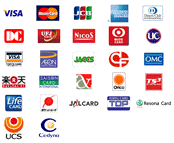Where to place (indoors or outdoors)? In addition, the policy of including questions in a schedule varies. English law firms tend to move elaborate clauses or case-specific clauses into annexes (and place the signature block on the last page of the contract, but before any annexes). The context is likely that the standardised parts of a transaction should be separated from the client-specific parts, particularly if the attached clauses are operational and not subject to negotiation; it also reflects the modular nature of modern procurement, which is also visible in the automated assembly of contracts (see Section 9.1). Obviously, the transfer of these provisions into a timetable improves the readability of what remains. U.S. legal practice tends to leave as much as possible in the main agreement (i.e. resulting in bulky items that include warranties). However, for Andrew Weeks (one of our plain language gurus), we can (and should) look at this from a practical and simple level of language. With an annex, an annex or an annex, these are all “annexes”. Therefore, you should refer to “Schedule 1” and not “Schedule 1” or “Schedule 1” and clearly indicate in the wording of the agreement whether or not they should be an integral part of the agreement.
You can also call a calendar a “list.” When creating an addendum, you must ensure that you are using language that indicates the importance of the information and whether or not it is considered an integral part of the original document. Typically, there is an addendum at the end of the document and can also be used to clarify information that may not have been clear in the original document. Other terms used to refer to an addendum could be: An annex should not be confused with a supplementary agreement. These are used to modify or extend the terms of a contract already concluded. The following is a brief introduction to an appendix to a contract. The most important thing is that the annex is included and described in the text of the main agreement. A contract attachment is one or more documents that constitute an immediate renewal of a contract. Sometimes a contract can be very short, for example if .B if it is drafted in accordance with a framework agreement or if it is a copy of a previous contract.
An annex has no fixed meaning in contract law – only after it has been enshrined and included in the main agreement to which it relates. Since contracts are legally binding documents, it`s important to understand what you`re agreeing to before putting your signature on the dotted line. Make sure you know which attachments make changes to your original agreement and which don`t. You should contact a lawyer if you have any concerns or questions about the schedules to a contract. This will eliminate all unpleasant – and potentially costly – surprises on the road. Numbering. Schedules must be marked with a number or letter. In the agreement, the number serves as an identifier (and the chosen reference word (annex, annex, etc.) and number must be marked). The numbering style is also free to choose, although it is a good idea to define the numbering style as part of the contractual design agreements of the company or company[1] (or house style). The numbering may be in digits (Annexes 1, 2, 3), In Roman numbering (Appendix I, II, III) or in capital letters (Annex A, B, C). Once entered into the file, the evidence is provided with an identity document and becomes part of the legal files. An exhibit is a physical or physical object and may contain: for this purpose, the contractor shall use the document identification scheme set out in Annex D.
Although a physical connection is implicit, real contact is not always necessary. For example, annexation occurs when a country acquires a new territory, even if the new territory is not directly adjacent to the existing land. Now let`s look at some concrete examples of appendices and attachments. Complexity. The transaction is complex, in this case structuring into schedules improves the manageability of all transaction documents. Name schedules into schedules. The integration of schedules into schedules again raises the question of naming. We recommend that you use a different naming convention for these embedded schedules. For example, it is a good idea to refer to the schedules of the main agreement as a schedule and refer to the attachments to these schedules as an appendix (or exhibition).
Many contracts contain exhibits. The style of designation – issue, schedule, schedule, schedule or schedule – is not relevant, except that a chosen term must be used consistently throughout the agreement. French lawyers may prefer different terminology because the original translated term simply corresponds to its English counterpart (e.g. .B. appendix vs. appendix vs. appendix vs. appendix); and some industries may have established terminology.
English law firms seem to work with schedules, while American firms sometimes prefer Attachment or Exhibit). The difference between appendix and exhibition is important for anyone signing a contract to know.2 min read You may be wondering if you really need to understand the difference between the appendix and the appendix as long as you include all the additional material your research paper needs. Oh, really! Depending on the academic or editor-related style guide you`re working with, you may need to style an attachment differently than an attachment. Their indexing, page numbering, appendix to a research document, etc. are some of the aspects that may be different for an appendix and an appendix. Whatever your area of expertise or specialization, if you do serious research and document it appropriately, you need to make a solid and knowledgeable use of the appendix and understand how it differs from the schedule. See an example of using attachments and share your personal questions and experiences with us in the comments. The term is generally used to refer to the connection of a smaller or subordinate unit with a larger or main unit. For example, a smaller piece of land can be attached to a larger one. Similarly, a smaller document can be attached to a larger document, such as .
B a codicil to a will. In real estate law, annexation is used to describe how movable property is associated with property. ANNEXATION, property. Unification from one thing to another. 2. In furniture law (see also), annexation is real or constructive. Effective annexation is any movement by which movable property can be combined or united with immovable property. Constructive annexation is the union of such things which were the property of the land but which are not actually annexed, fixed or related to the land; for example, deeds or movable property relating to the title of succession. Shep.
Touch. 469. Empty Anios & Iron. on luminaires, 2.3. This term applies to the union of one country, to another; When Texas was annexed to the United States by the joint resolution of the Larch Congress 1, 1845, see Texas. The mere fact that a garnishment was a separate document before the agreement was signed does not mean that it necessarily still has this status in the future, i.e. its legal meaning may be “frozen” at the time the agreement with it is signed (usually initialized) as garnishment. Changes to the original document (a copy of which has been attached) generally do not alter the agreement itself, unless this is clearly the intention. Schedules, attachments, and attachments are all “attachments.” You should call it “Schedule 1,” not “Schedule 1” or “Schedule 1.” Make it clear in your agreement whether or not any of these attachments are part of the contract. You can also refer to a “calendar” as a “list”.
An attachment also refers to something that is added, added, or added. You can use the term “annex” interchangeably with “part” and “annex”. In general, the term “schedule” is much rarer than other terms. However, you will more often see “attachments” in documents that have an international impact, such as treaties .B. .













